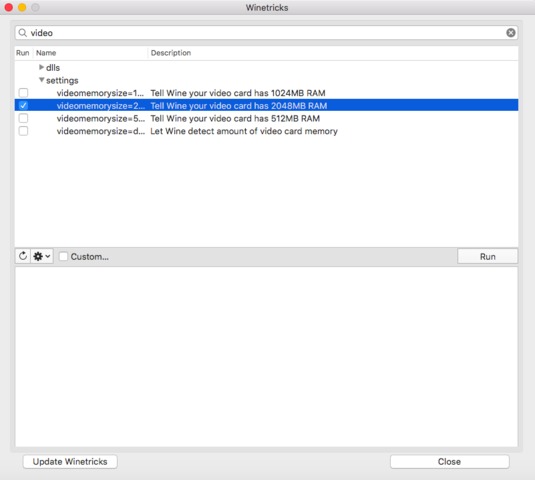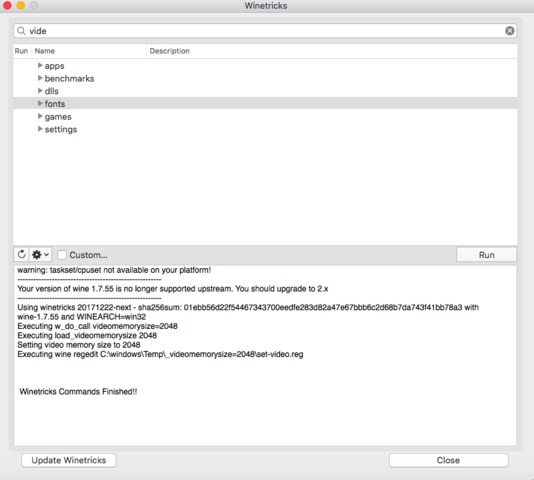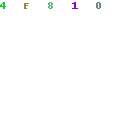
(This was originally a pinned thread on the MOUL forum)
There is (or was) a wealth of informations on how to run Myst Online: Uru Live on macOS and Linux on the forum, but it is a bit scattered, so I thought to consolidate it in a single tutorial. I probably missed something, so if you have any suggestions, please let me know so I can update this post.
Depend on GStreamer or the Mac QuickTime Toolkit to decode such media files. Some more VMR7 configuration APIs are implemented. The sound drivers support per-channel volume adjustments. Internationalization: Unicode character tables are based on version 12.1.0 of the Unicode Standard. Unicode normalization is implemented.
- Wineskin not working on macOS High Sierra - posted in Wineskin Discussions: Hello, I've been testing Wineskin on the final version of High Sierra (downloaded from app store) and it doesn't work. All the Wrappers don't open and sometimes the app crashes. So it's confirmed that Wineskin doesn't work and it's necessary a new update of the app to fix this bug. I hope you can find any.
- HeidiSQL For Mac. HeidiSQL ported to Mac using Winery WineSkin. What Is HeidiSQL For Mac. HeidiSQL is free software, and has the aim to be easy to learn. 'Heidi' lets you see and edit data and structures from computers running one of the database systems MySQL, MariaDB, Microsoft SQL or PostgreSQL.
Contents
- Installation on macOS
Installation on macOS
TL;DR version: In my opinion, the best option on macOS before 10.15 ‘Catalina’ is the Wineskin wrapper; it already has all it needs, except ~1.2 GB of data files that will be downloaded once you launch them. To install other shards, see my other tutorial.
If you get a “Uru Live.app is damaged and can’t be opened” error, you will need to launch the Terminal, type “xattr -c ” (with a space at the end), drag the Uru Live.app file into the Terminal window, then press Enter. You will lose the fancy icon though, so remember to copy it somewhere to later restore it 😀

With the ‘OpenUru#159’ update the Cider wrapper (including the MacPorts one) is unable to update PhysX, so it will not work.
Wineskin Mac Os High Sierra
With Wineskin, please avoid using the audiochat, your voice will come out annoyingly distorted on other people’s clients.
About macOS 10.15 ‘Catalina’: Starting from this version of macOS, support for 32 bit applications has been completely removed. This means that almost all the solutions listed here will stop working. Codeweavers has found a solution, implemented in Crossover 19, and promised to release the code so that WineHQ and related solutions can benefit from it.
BobLishman was handling the troubleshooting with Crossover in this thread, before the forum closure. In the meantime, if you do not want to buy Crossover, the only viable solution is to not update to Catalina, until Codeweavers’ solution is implemented by the other projects (more info here).
About macOS 10.13 ‘High Sierra’: in some cases, this update broke wrappers (see post 1, post 2). In short, Cider can have troubles updating UruLauncher.exe. Wineskin requires to disable Auto Detect GPU Info for Direct3D (see Wineskin); occasionally Wineskin crashed before this option could be set.
- If you cannot reach the lower portion of the screen while in fullscreen, first switch to windowed mode (
⌘↵), then move the resolution slider (F4) to the right, close the settings then switch to full screen again. - If you start the game in windowed mode an its top half is beyond the screen, click on Apple Menu > System Preferences > Displays; under Resolution check that Scaled is selected, then select a resolution at random. This will force the window back in, so you can drag it. Change the resolution setting back to the previous settings.
Wine (MacPorts)
You will need Wine (the software, not the beverage); WineHQ now has an official package for macOS. You will need to install the Winetricks packets d3dx10 and vcrun6 (./winetricks d3dx10 vcrun6), and install the PhysX legacy component (wine msiexec /i PhysX...).
Once you have done that, you should be able to launch the MOULa installer as if it were a Mac application. The Program folder (where Uru Live will be installed) is in the c_drive folder inside the prefix (by default in in the invisible folder .wine inside your Home folder; use the shortcut ⌘⇧G, then type “.wine” and click Go).
Shards will need vcrun2015 or vcrun2013 instead of vcrun6, plus crypt32. See my other tutorial for the specific requirements. Audio can be broken (see Wineskin).
For MOULa specifically, a simpler procedure is to install MacPorts, open the Terminal as admin and type the command sudo port install mystonline-cider (for the Cider version, see below) or sudo port install mystonline-wine (for the standard Wine version).
Note that macOS 10.14 ‘Mojave’ no longer supports building 32-bit code, so the MacPorts option only works for older versions.
The Cider version uses a modified wrapper with the data files moved in /opt/local/share/mystonline/data/, shared with the Wine version.
Cider
The ‘OpenUru#159’ update switched to a slightly newer version of PhysX, which the Cider wrapper is unable to update, so it will not work.
There is a bug in full screen mode that prevents one to reach the icons in the lower part of the screen; a possible solution is to switch to windowed mode (⌘↵), change the resolution (F4) by moving the slider to the right (be sure not to set it larger than the native resolution of the screen!), close the settings then switch to full screen again.

You can get a ready-made version from my archive, from Ainia or from BobLishman. The following procedure is left for completeness’ sake and for those who still would like to try it out.
- You will need the GameTap Cider wrapper and the new version of UruLauncher.exe (both available from here);
- Once you copied it somewhere, right-click (or ctrl-click) on the Cider wrapper and substitute the UruLauncher.exe executable in Contents/Resources/Myst Online.app/Contents/Resources/transgaming/c_drive/Program Files/Uru Live/ with the new one;
- When you launch the wrapper, it will start updating files, about 1.2 GB of stuff. Once it is done, you will be ready!
- Optional: to update the server status update, which otherwise will not show anything, again inside the Cider wrapper you will have to look for these files:
- Contents/Resources/Myst Online.app/Contents/Resources/transgaming/c_drive/Program Files/Uru Live/Cider/URU Live Login.app/Contents/Info.plist
- Contents/Resources/Myst Online.app/Contents/Resources/transgaming/c_drive/Program Files/Uru Live/Cider/URU Live Updater.app/Contents/Info.plist
and in both substitute: “http://support.mystonline.com/serverstatus/urulivelive.php”
with: “http://support.cyanworlds.com/serverstatus/moullive.php”
(This could reset if you delete the TOC.txt file).
Basically only the Minkata shard can be installed with this method.
Wineskin
You can get a premade wrapper from my archive, from AllThingsUru or from PaulTheTall (as a CrossOver CrossTie). These wrappers already have the needed libraries installed, so if you get one of them, start from point 6 but click on Install Software, then Choose Setup Executable, pointing to the MOULa installer location. If you use mine, then you can just launch it, you will not need any installer.
Please avoid using the audiochat, your voice will come out annoyingly distorted on other people’s clients.
For an illustrated version of this method, see BobLishman’s tutorial.
- You are going to need the PhysX Legacy component and of course the MOULa installer;
- The original Wineskin software is no longer in active development; I suggest using the unofficial version (you just copy Wineskin Winery e.g. in the Applications folder);
- From Wineskin Winery click the + on the left of “New engine(s) available!”; from the list that appear select WS9Wine3.0, then “Download and Install”;
- From Wineskin Winery click Create New Blank Wrapper, name it (e.g. “Uru Live”) and let the program work; eventually you should have, in /Applications/Wineskin, a wrapper of ~300 MB (tip: backup it, you could use it for other Windows programs);
- Right-click, select Show Package Content and launch Wineskin. Under macOS 10.13 High Sierra, click Set Screen Options, then under Other Options deselect Auto Detect GPU Info for Direct3D. Click Done;
- Now click Advanced, then Configuration > Browse, select the PhysX Legacy component and click Choose ((I will refer to this operation as “pointing the wrapper to” in the following). Click Test Run and install PhysX, using the default settings;
- Ignore the logs, point the wrapper to the MOULa Installer and click Test Run again (this will take a while);
- Once the Installer is done, ignore the logs again, click Browse, select UruLauncher.exe and click Choose. Check that the wrapper is using “/Program Files/Uru Live/UruLauncher.exe” (you can also just type that line in the Windows EXE field) and close Wineskin. You can now use the wrapper as a standard application.
- The first time you will launch it, it will take some time, as the Launcher will download about 1.2 GB of data.
- Optional cosmetic tips: from the Advanced panel (see point 5), type e.g. “Uru Live” in the Menubar Name field and “1.918” in Version (as a reminder of the current version); from Set Screen Option uncheck Decorate windows (as sometimes this option hides alert boxes). Drag the Extra Gamma Correction cursor to the right you you want to brighten up the environments.
To install a shard, you will have to duplicate the wrapper and follow the shard’s instructions; typically, you will need to rename the Uru Live folder to the name used by the shard, point the wrapper to the installer, let it work and point the wrapper again to UruLauncher.exe.
Any shard can be installed with this method. Also, if you have an unsupported graphic card, it might be that with the Cider wrapper you will not see the avatar, while with the Wineskin one you could.
On the other hand, audio can be broken, even badly, and trying to use the audiochat produces horrible noises.
Note that the original Wineskin is essentially abandoned and likely will not work on macOS >10.13. There is an unofficial fork that works for macOS 10.9–10.14.
PlayOnMac
PlayOnMac (soo-to-be-known-as Phoenicis) is a free software that can help you install and use numerous games and software designed to work on Windows. It is somewhat like Wineskin, but it guides you throughout the installation process. Works for MOULa and for shards too. As a sidenote, it is becoming my favorite method, replacing Wineskin; however, some have found it more sluggish than Wineskin.
I prepared a few scripts that should automate the installation process; they should work, but consider them beta.
Installation on Linux
A simple option is using Lutris.
Another simple option is using PlayOnLinux (soo-to-be-known-as Phoenicis): I prepared a few scripts that should help with the installation process. They work for me, but consider them beta.
If you still prefer to try to do things manually:
You will need Wine (preferably from WineHQ, as the repositories in many distros are usually outdated), then (with some caveats) you will be able to install Uru Live and shards like in Windows. Wine ≥3.0 seems to work quite well with all shards.
You will need to install the Winetricks packets d3dx10 and vcrun2012 (winetricks d3dx10 vcrun2012), and install the PhysX legacy component (wine msiexec /i PhysX...).
Shards will need vcrun2015 or vcrun2013 instead of vcrun2012, plus crypt32. See my other tutorial for the specific requirements.
Also, on the first run the resolution change might hide most of the screen; you can reset the resolution usually by pressing F8 (the one with the empty screen), then setting it in-game.
Sources
- “MO:ULagain specs/Mac-friendly?”, post by Shoom’lah
- “MO:ULagain specs/Mac-friendly?”, post by rainbow
- “Installing Gehn Shard on OSX”, post by Deledrius
- “Common Problems and How To Solve Them”, post by Mac_Fife
(Korov’ev)
Recent developments in virtualization, emulation and techniques that allow running of applications developed for “foreign” platforms as if they were native ones, have made it relatively easy, and often free, to use the same app in mixed environments.
This post takes a closer look on one of this techniques, namely Wine (acronym for “Wine Is Not an Emulator”), that allows running native Windows software on POSIX-compliant operating systems, such as Linux, macOS, & BSD, without need for a Windows license.
Here we install the game on macOS Sierra / High Sierra (the screenshots are from Sierra).
- First you need to allow your system to install apps from “App Store and identified developers” (or possibly “Anyone”, depending on what else needs to be installed other than XQuartz and Wine). Earlier macOS versions let you alter the default setting (that allows apps only from the App Store) by setting the Gatekeeper option under System Preferences > Security & Privacy > General, but High Sierra hides the other two options and you need to enable them by opening the Terminal (in Finder, click Go > Utilities and open Terminal), and type the following (you need to enter your user password to be able to change the setting):
- After this you can go and change the Gatekeeper setting.
- Go to https://www.winehq.org and read the introductory text, if you are not familiar with the concept of Wine, then go to https://wiki.winehq.org/MacOS to read installation instructions specific to macOS.
- You first need to have XQuartz 2.7.7. (or later) installed. Visit https://www.xquartz.org to download it. Click the .pkg file in Downloads to mount the installer, then launch it to go through the installation.
- After having installed XQuartz, download Wine at https://dl.winehq.org/wine-builds/macosx/download.html (version 2.21 “Wine Staging” is a good choice):
- Download the .pkg file, click it in Downloads to mount the installer, then launch it to start the installation. During the installation, you may be interrupted by prompts to install support for Mono (for .NET applications) and Gecko (for apps that use HTML internally). Accept to install these support packages.
- After the installation is complete, you can go to http://www.4windsmj.com/downloads01.htm and download the latest version of Four Winds Mah Jong. Once downloaded, click the executable setup package (normally 4W2Full24.exe) in Downloads. It will automatically be launched in Wine and installed in correct location. A Windows shortcut is placed on the desktop, but it naturally does not work. You need to replace it with a Mac alias.
- Open your Home folder (in Finder, click Go > Home or press Cmd+Shift+H). Now make hidden files and folders visible by pressing Cmd+Shift+. (dot). This shows the hidden .wine folder where your Windows environment is installed:
- Double click the .wine folder and open folders until you have 4Winds2 folder open (the folder path relative to .wine is, as shown in the image below: drive_c > Program Files > 4Winds2:
- Here, click with the secondary mouse button on 4Winds2.exe to create an alias, then drag and drop it on your desktop.
- Launch Four Winds by double clicking the alias.
- Once launched, go to File > Preferences, and under User Interface > General option page (accessed by the category tree on the left), disable color management by clearing the check mark from the Use color management option:
You may also need to Bypass DirectX sound (under the same option page), and choose a MIDI file (on the Themes option page) for the “Background” and “Win of the game” music, or set their values to “none”. (the default music comes as .mp3 files which require DirectX). If you do not change the sound settings, you can turn off background music from the Options menu so that an unsupported feature is not used.
- If you have a one-button mouse, click the Game Controls button, then change the mouse control setting for discarding from “Right click on raised tile” to “Click on raised tile”. On the same dialog box, you may need to uncheck Use custom cursors (with recent Wine builds, animated and custom cursors seem to be working fine, but if the game suddenly freezes, one possible cause is the use of custom mouse cursors).
- Close the Preferences dialog box and click Help > Register to enter your registration name and number. Then choose Game > New Game to start a new game with preferred rules.
- You may want to test with different game boards by using the options under the View > Game boards sub menu to find the board size and layout that works best on your screen. Note that the quality of graphics is mediocre compared to the original but looks slightly better on boards that have not been scaled. If you choose a 24-bit theme, scaling has a better quality: e.g., for the default graphics, choose File > Preferences, then under User Interface > Themes, choose “Four Winds (24-bit)”.
And there you are, running Four Winds Mah Jong on your Mac, without needing a Windows license. The quality is not as good as when using VMWare or VirtualBox (both free), or Parallels Desktop, not to mention running the game on real Windows on a BootCamp partition, but at least you can now play proper Mahjong with multitude of rule options offline on your Mac.
Wineskin Macos High Sierra Download
A screenshot of Four Winds 2.18 running on macOS Mojave using the latest Wine (4.2 Staging) and XQuartz 2.7.11.
The quality of graphics has improved with latest versions and scaled boards work well.
Wineskin Para Mac High Sierra
Running Four Winds on Linux
Wineskin For Mac High Sierra Leone
The procedure is basically the same as on macOS, though installation happens from within the Terminal. WineHQ has instructions for installing Wine on several different Linux systems. Below is a screenshot of Four Winds running on Ubuntu 16.04 using Wine 3.0.



